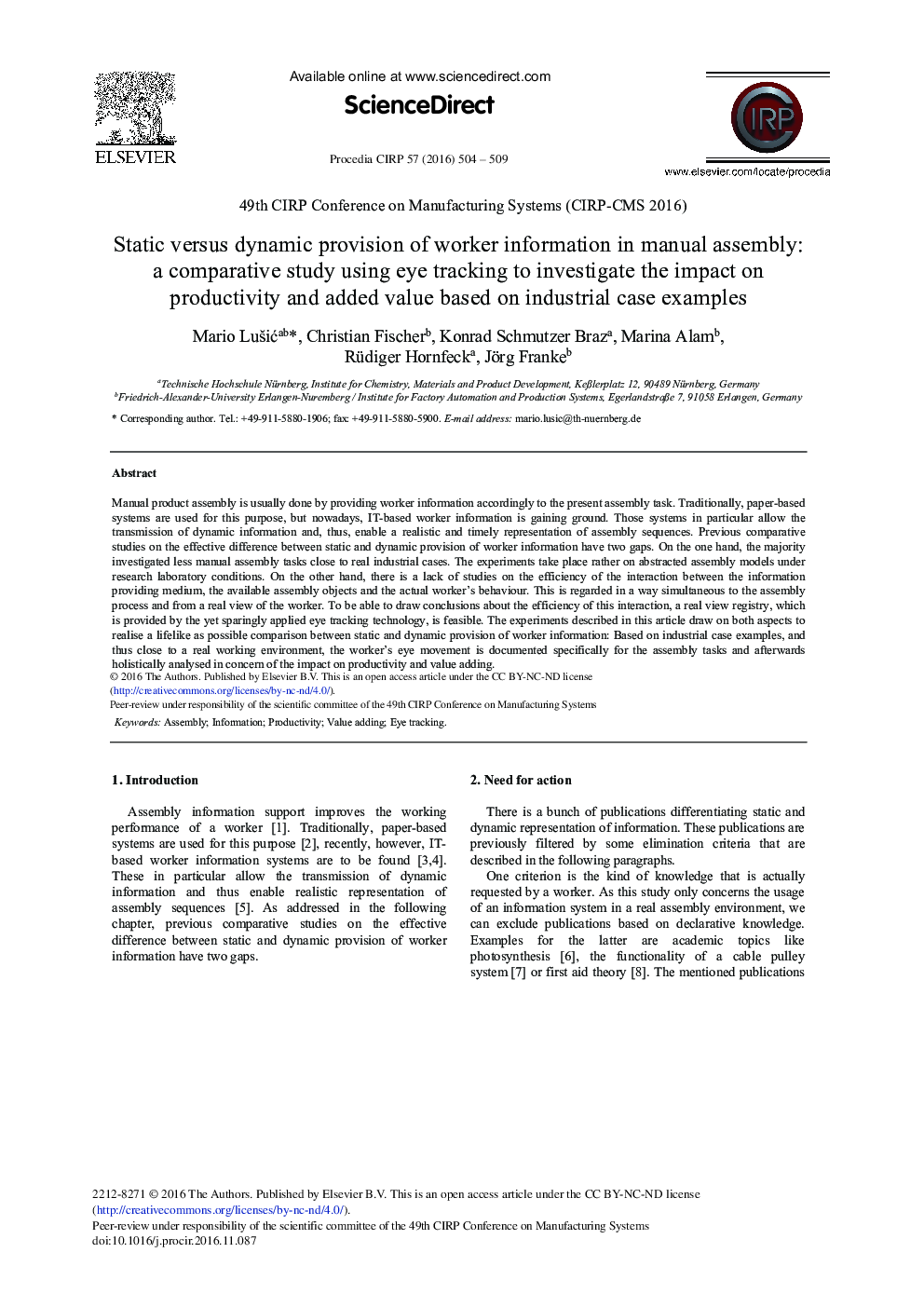| Article ID | Journal | Published Year | Pages | File Type |
|---|---|---|---|---|
| 5469870 | Procedia CIRP | 2016 | 6 Pages |
Abstract
Manual product assembly is usually done by providing worker information accordingly to the present assembly task. Traditionally, paper-based systems are used for this purpose, but nowadays, IT-based worker information is gaining ground. Those systems in particular allow the transmission of dynamic information and, thus, enable a realistic and timely representation of assembly sequences. Previous comparative studies on the effective difference between static and dynamic provision of worker information have two gaps. On the one hand, the majority investigated less manual assembly tasks close to real industrial cases. The experiments take place rather on abstracted assembly models under research laboratory conditions. On the other hand, there is a lack of studies on the efficiency of the interaction between the information providing medium, the available assembly objects and the actual worker's behaviour. This is regarded in a way simultaneous to the assembly process and from a real view of the worker. To be able to draw conclusions about the efficiency of this interaction, a real view registry, which is provided by the yet sparingly applied eye tracking technology, is feasible. The experiments described in this article draw on both aspects to realise a lifelike as possible comparison between static and dynamic provision of worker information: Based on industrial case examples, and thus close to a real working environment, the worker's eye movement is documented specifically for the assembly tasks and afterwards holistically analysed in concern of the impact on productivity and value adding.
Related Topics
Physical Sciences and Engineering
Engineering
Industrial and Manufacturing Engineering
Authors
Mario LuÅ¡iÄ, Christian Fischer, Konrad Schmutzer Braz, Marina Alam, Rüdiger Hornfeck, Jörg Franke,
